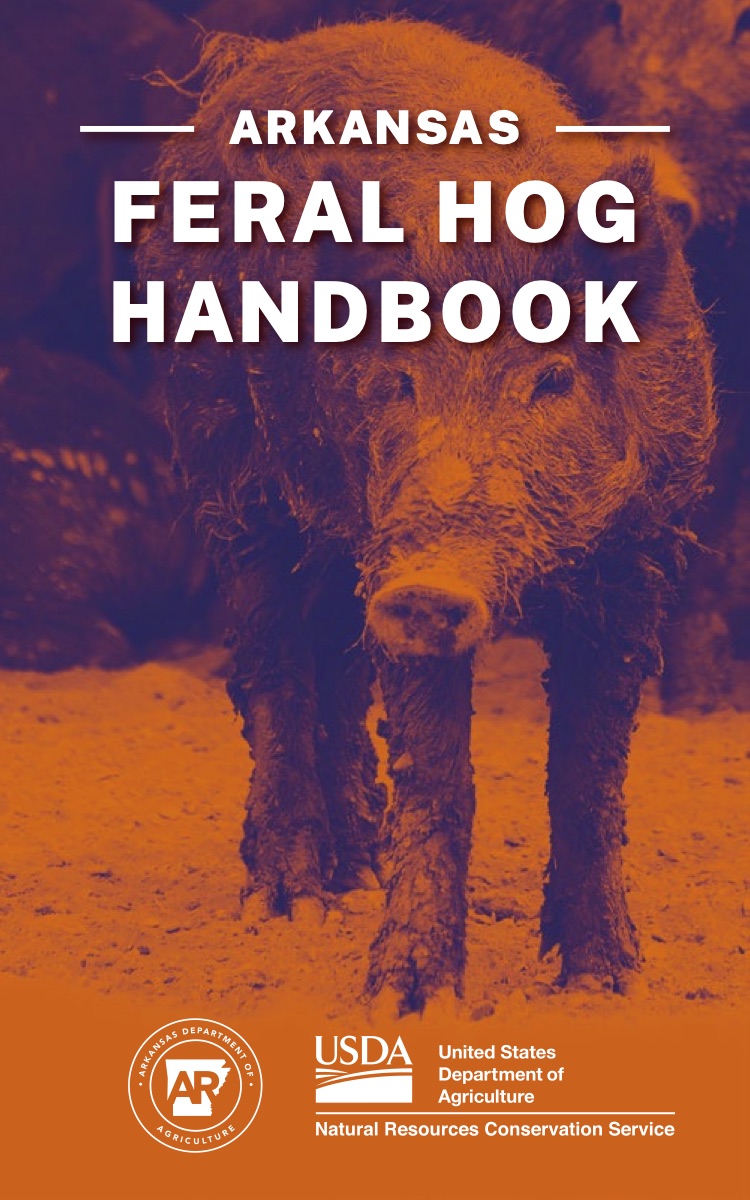Oct. 9, 2020
Cooperative Extension Service leads outreach effort in state’s feral hog eradication program
By Ryan McGeeney
U of A System Division of Agriculture
Fast Facts:
- Feral Hog Eradication Task Force launching focused effort to control invasive species
- Cooperative Extension Service to play leading role in public education
- Feral hogs cause $19 million in damage in Arkansas annually
- Download handbook at https://www.agriculture.arkansas.gov/wp-content/uploads/2020/10/FeralHogHandbook.pdf
(452 words)
(Download this story in MS Word format here.)
LITTLE ROCK — County agents with the Cooperative Extension Service, part of the University of Arkansas System Division of Agriculture, will serve as a leading edge in educating Arkansans about potential damages posed by feral hogs, and the state’s efforts to eradicate them.

Feral hogs are an invasive species known for damaging both agricultural and wild areas, often denuding areas of native plants, acorns and other food and cover that animals rely on. They are known to host at least 45 animal diseases and parasites. In Arkansas alone, feral hogs inflict an estimated $19 million in row crop damage annually, according to a 2014 study.
Becky McPeake, extension wildlife specialist and professor for the Division of Agriculture, said CES offices throughout the state will be among several state agencies to soon begin distributing the Arkansas Feral Hog Handbook, a product of the Arkansas Department of Agriculture, funded by the U.S. Department of Agriculture Natural Resources Conservation Service.
The 20-page handbook is an educational tool of the Arkansas Feral Hog Eradication Task Force, which was established in 2017. Factual information in the handbook was based on publications from the Division of Agriculture and other partner organizations, McPeake said.
Cooperative Extension has offices in all 75 counties in Arkansas. The handbook, which is available both in print and online, will also be available through the Arkansas Association of Conservation Districts, Arkansas Game and Fish, Arkansas Farm Bureau and other partnering organizations.
The handbook can be viewed and downloaded at no cost at https://www.agriculture.arkansas.gov/wp-content/uploads/2020/10/FeralHogHandbook.pdf.
In addition to making the handbooks available, Cooperative Extension agents will lead multiple public education efforts, including landowner education pertaining to feral hog trap demonstrations and best practice discussions. Cooperative Extension will also continue ongoing research, including monitoring hog-related damage, evaluating the effectiveness of various control measures and experimenting with cutting-edge technologies.
The Arkansas Forest Resource Center, part of the Division of Agriculture which includes Cooperative Extension Service research and teaching faculty, will also bring interdisciplinary expertise to bear on the ongoing issue, McPeake said.
“Feral hogs are destructive to our state’s agriculture and forest industries, and directly compete with native wildlife for habitat,” she said. “They have a high reproductive capacity and can overtake the landscape fairly quickly. It’s going to require a concerted effort among private landowners, government agencies, and conservation organizations to fend off the ever-growing population of feral hogs in the state.”
Populations have been detected in every county in Arkansas, and are known to multiply quickly — a sow can produce one to two litters in a year, with four to 12 piglets per year. Because they become sexually active within six to eight months, populations can double in as little as four months, according to the handbook.
To learn more about extension programs in Arkansas, contact your local Cooperative Extension Service agent or visit www.uaex.uada.edu. Follow us on Twitter at @UAEX_edu.
About the Division of Agriculture
The University of Arkansas System Division of Agriculture’s mission is to strengthen agriculture, communities, and families by connecting trusted research to the adoption of best practices. Through the Agricultural Experiment Station and the Cooperative Extension Service, the Division of Agriculture conducts research and extension work within the nation’s historic land grant education system.
The Division of Agriculture is one of 20 entities within the University of Arkansas System. It has offices in all 75 counties in Arkansas and faculty on five system campuses.
Pursuant to 7 CFR § 15.3, the University of Arkansas System Division of Agriculture offers all its Extension and Research programs and services (including employment) without regard to race, color, sex, national origin, religion, age, disability, marital or veteran status, genetic information, sexual preference, pregnancy or any other legally protected status, and is an equal opportunity institution.
# # #
Media contact:
Ryan McGeeney
Communications Services
University of Arkansas System Division of Agriculture
Cooperative Extension Service
(501) 671-2120
rmcgeeney@uada.edu